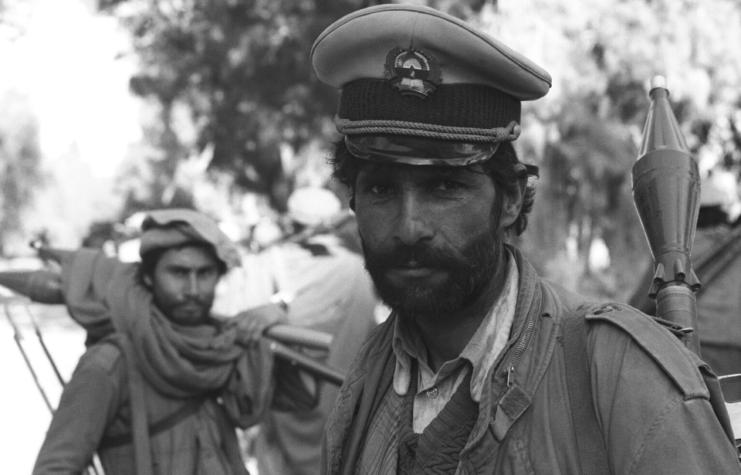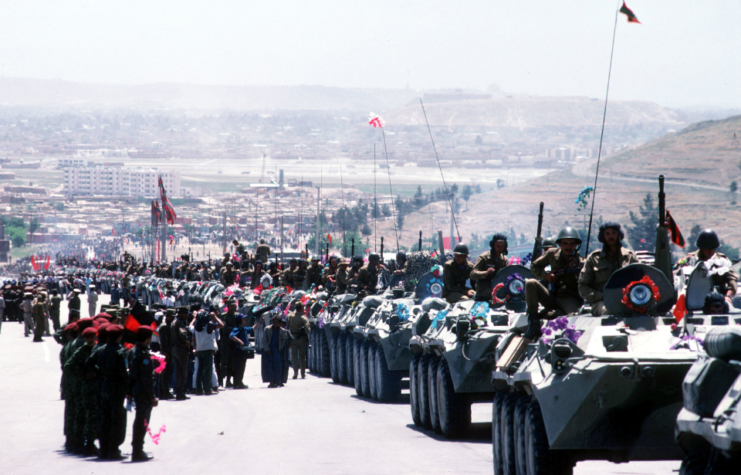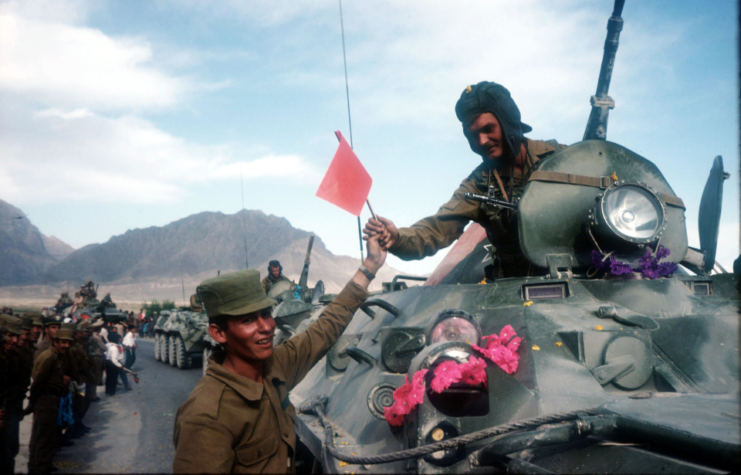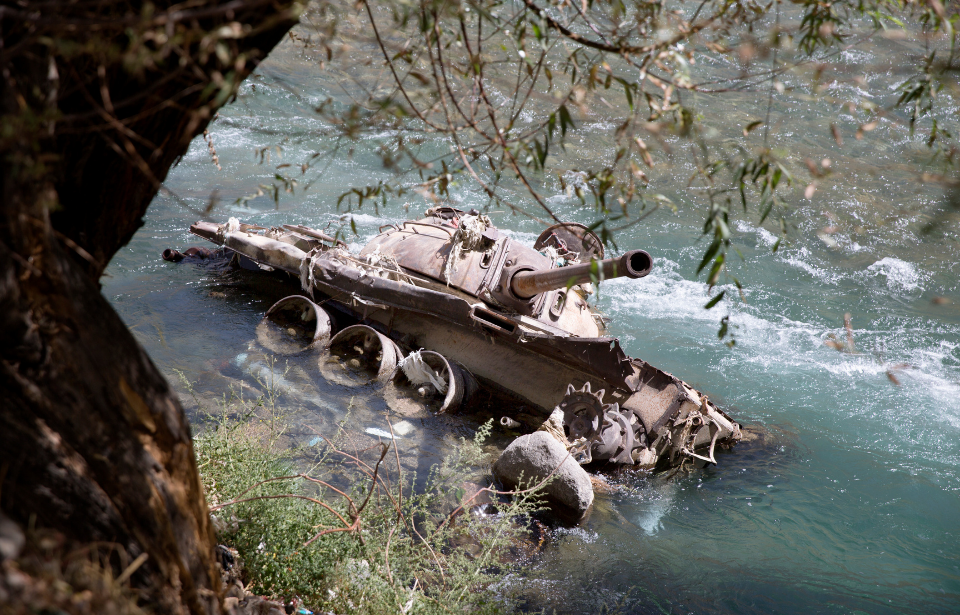On December 24th, 1979, the Soviet Red Army charged into Afghanistan, marking the beginning of the Soviet–Afghan War. This war would draw many parallels with the Vietnam War, even being known to many as “Russia’s Vietnam.” Eventually, the war would claim the lives of around 15,000 Soviet troops and 500,000–2 million Afghan civilians.
In 1978, a Soviet-backed coup by Nur Mohammad Taraki against Afghanistan’s government did not go as planned. In 1979, Hafizullah Amin, an Afghan politician and someone the Soviets did not trust to stay on their side, launched a counter-coup and removed Taraki from power. Amin had Taraki executed not long after.
With Amin in power, the USSR, under the leadership of Leonid Brezhnev, invaded Afghanistan in December of 1979 and assassinated Amin, replacing him with Babrak Karmal, who was loyal to them. The invasion was internationally condemned and only supported by a small number of the USSR’s allies.
They met with a lot of resistance

With massive quantities of troops and equipment, the Soviets expected to easily contain the country, but, like the U.S. in Vietnam, they faced stiff resistance from determined locals. These rebels began a jihad (a “holy war”) against the new government and their occupiers. Many small groups of locals from different areas combined to fight the jihad, and these were collectively known as the mujahideen.
As the Cold War was still raging, nations opposing communism financially and physically backed the mujahideen, who received funds and equipment from Britain and the U.S., amongst others. The mujahideen were still outmatched by the larger, better-trained, and better-equipped Red Army, so they adopted guerrilla warfare tactics to fight their enemies. They harassed and sabotaged wherever possible.
To begin with, the Red Army made good progress, but eventually, the war ground down as the Soviets attempted to dig out the rebels, who knew how to use the landscape and climate to their advantage. This continued for nine years.
Eventually, the Soviets were forced to withdraw

After these long and hard nine years, it was painfully clear that the Soviets had no way of completely destroying the mujahideen and bringing Afghanistan under their rule. They began pulling their troops out in 1988. The Soviets were completely gone by 1989. The war had cost the USSR huge amounts of money, men, and political stability.
In 1991, just a few years after the last troops had left Afghanistan, the Soviet Union collapsed. Many believe the Soviet–Afghan War was a major contributor to the collapse.
Despite the withdrawal, the mujahideen had not won yet. The Soviets continued to back the Afghan government, who were left to fend off the mujahideen alone, but this funding ceased in 1991. The rebels took over control of the country by 1992.
However, this was still not a decisive victory, as without a common enemy, the many individual groups within the mujahideen began warring with each other in a civil war. In 1994, the civil war led to the creation of the notorious Taliban, who believed Muslim rule had not been properly established throughout the entire nation after the communist government was removed.

The Taliban were in possession of most of the weapons and equipment given to the Afghan rebels from supportive nations during the Soviet–Afghan War. This well-equipped group began defeating and assuming control of various territories around the country.
By 1998, 10 years after the Soviet withdrawal and long after the Soviet Union’s collapse, the Taliban controlled 90% of Afghanistan.
Their rule was incredibly oppressive and affected people’s basic human rights, prompting the United Nations to condemn the Taliban. After the 9/11 attacks in 2001, Osama bin Laden went into hiding, where he was sheltered by the Taliban.
The Taliban ignored major U.S. pressure to hand over bin Laden, resulting in the American invasion of Afghanistan. The U.S. had much greater success than the Soviets a few decades earlier, as they had control of the country by the end of 2001. But, as with the Soviet occupation, rebel factions in Afghanistan resisted the invasion with guerrilla warfare and prevented the U.S. from declaring a complete victory.
More from us: Ilyushin Il-2: The T-34 Of The Skies
The Soviet Invasion of Afghanistan and the subsequent backing of their enemies by Western and Middle-Eastern countries unintentionally created the terrorist groups that governments are still trying to tackle today.
